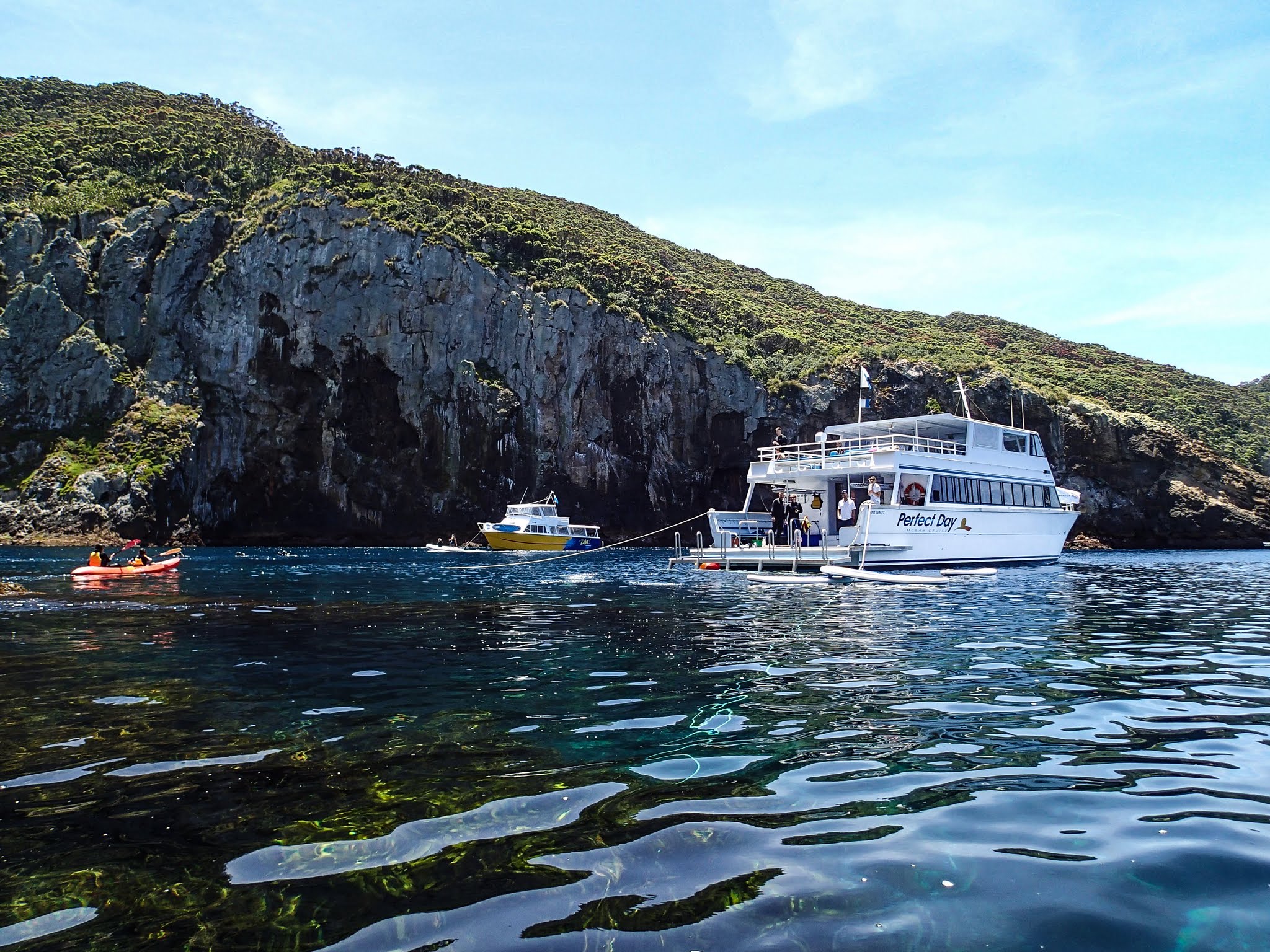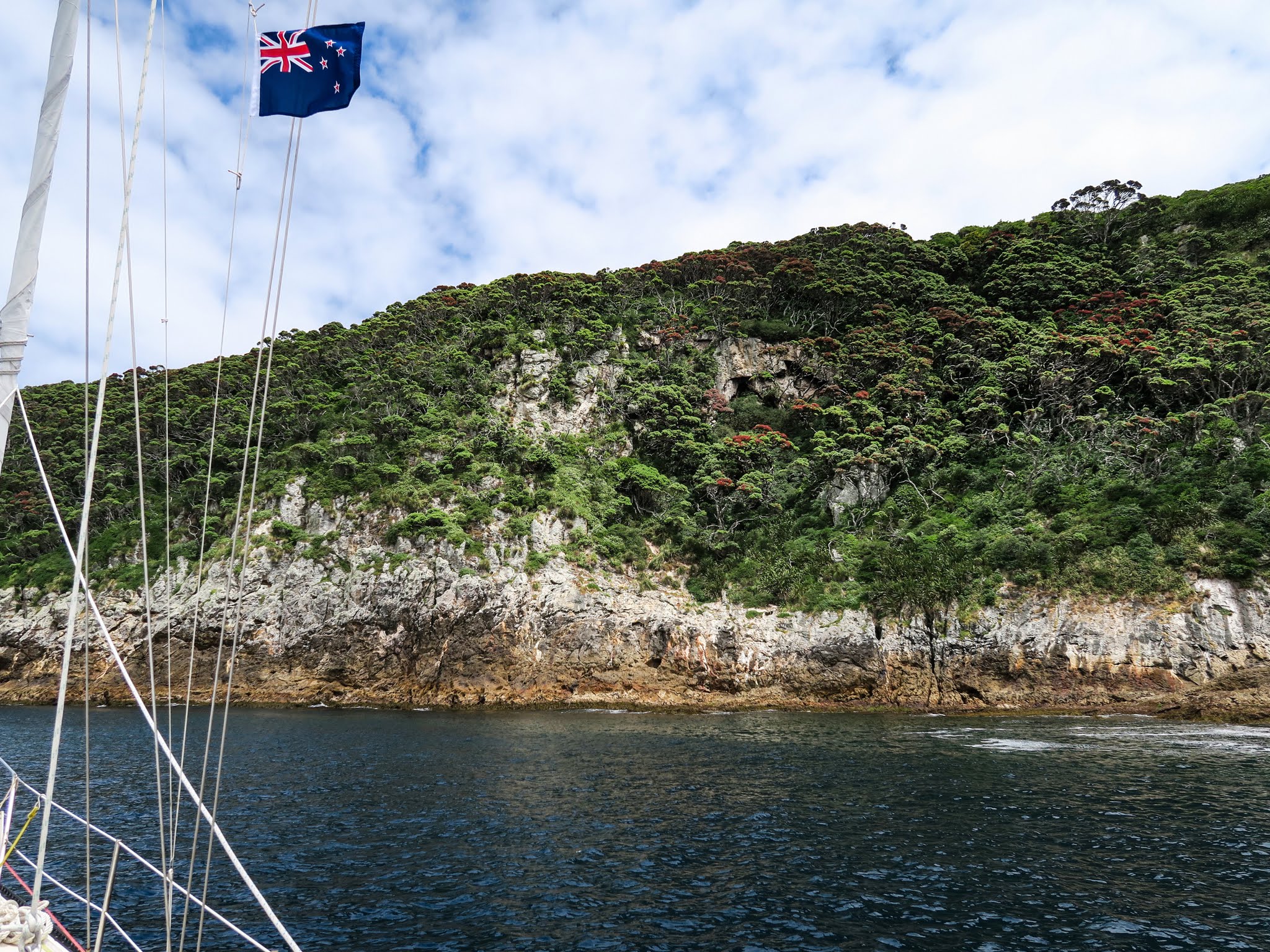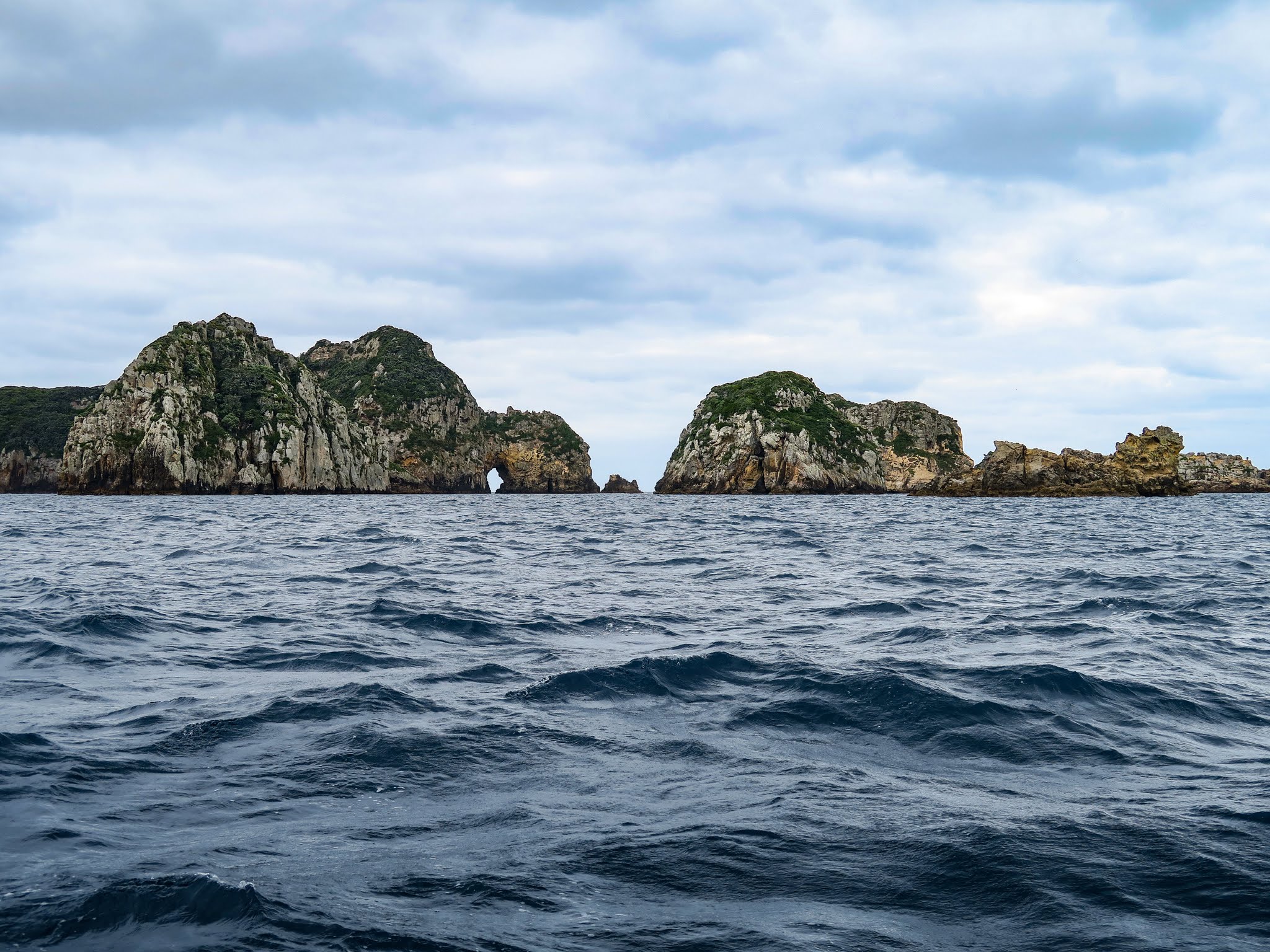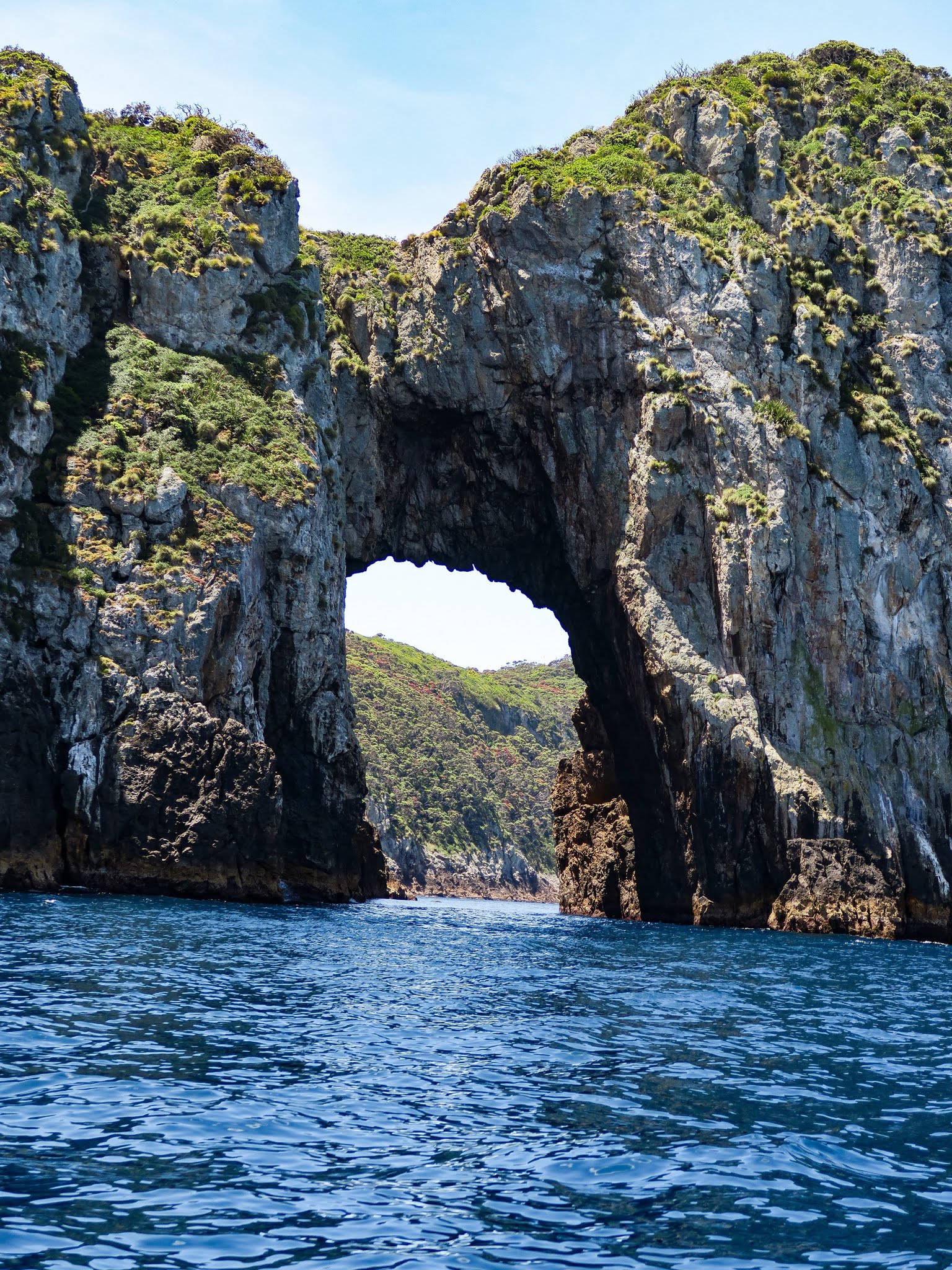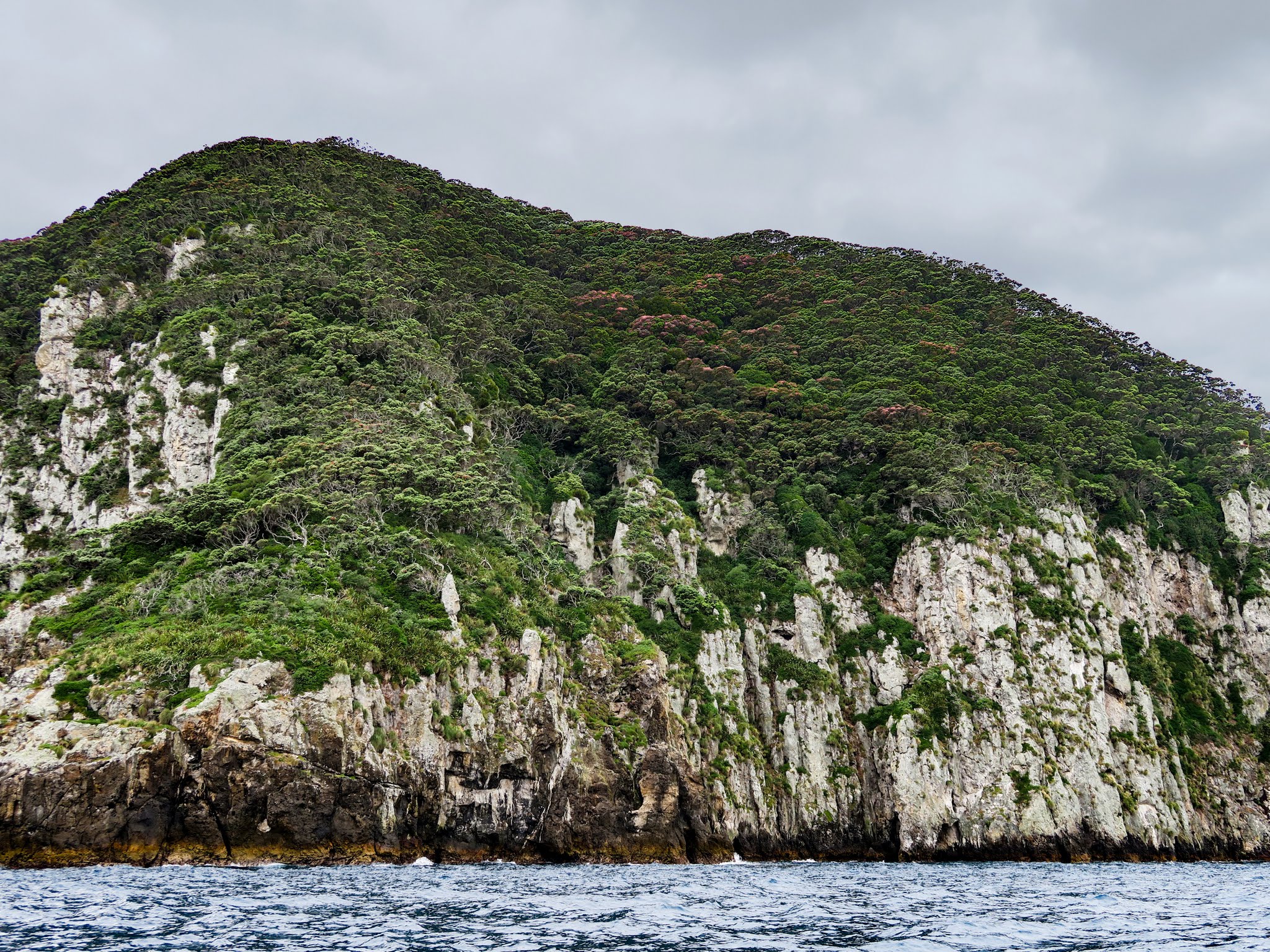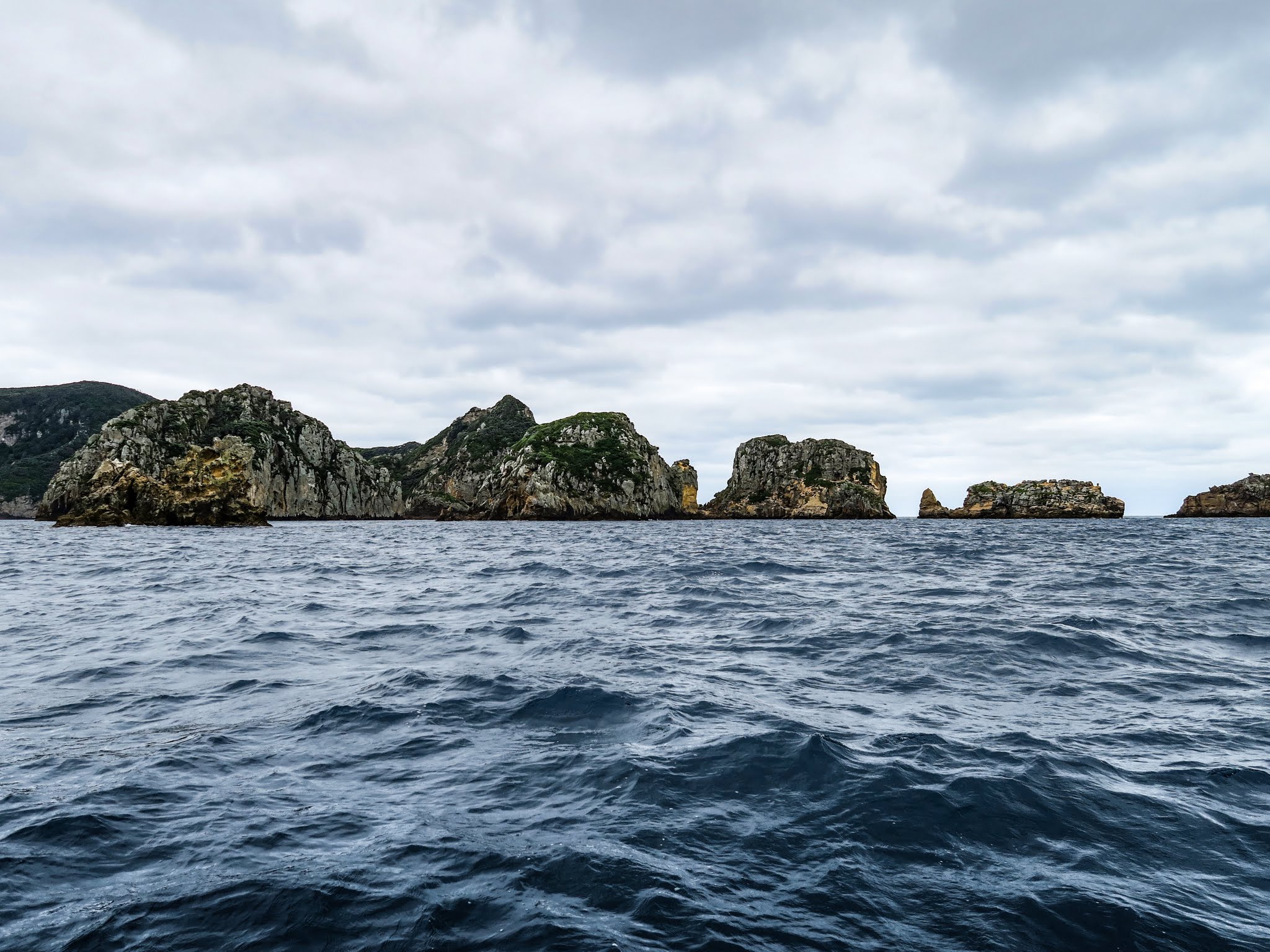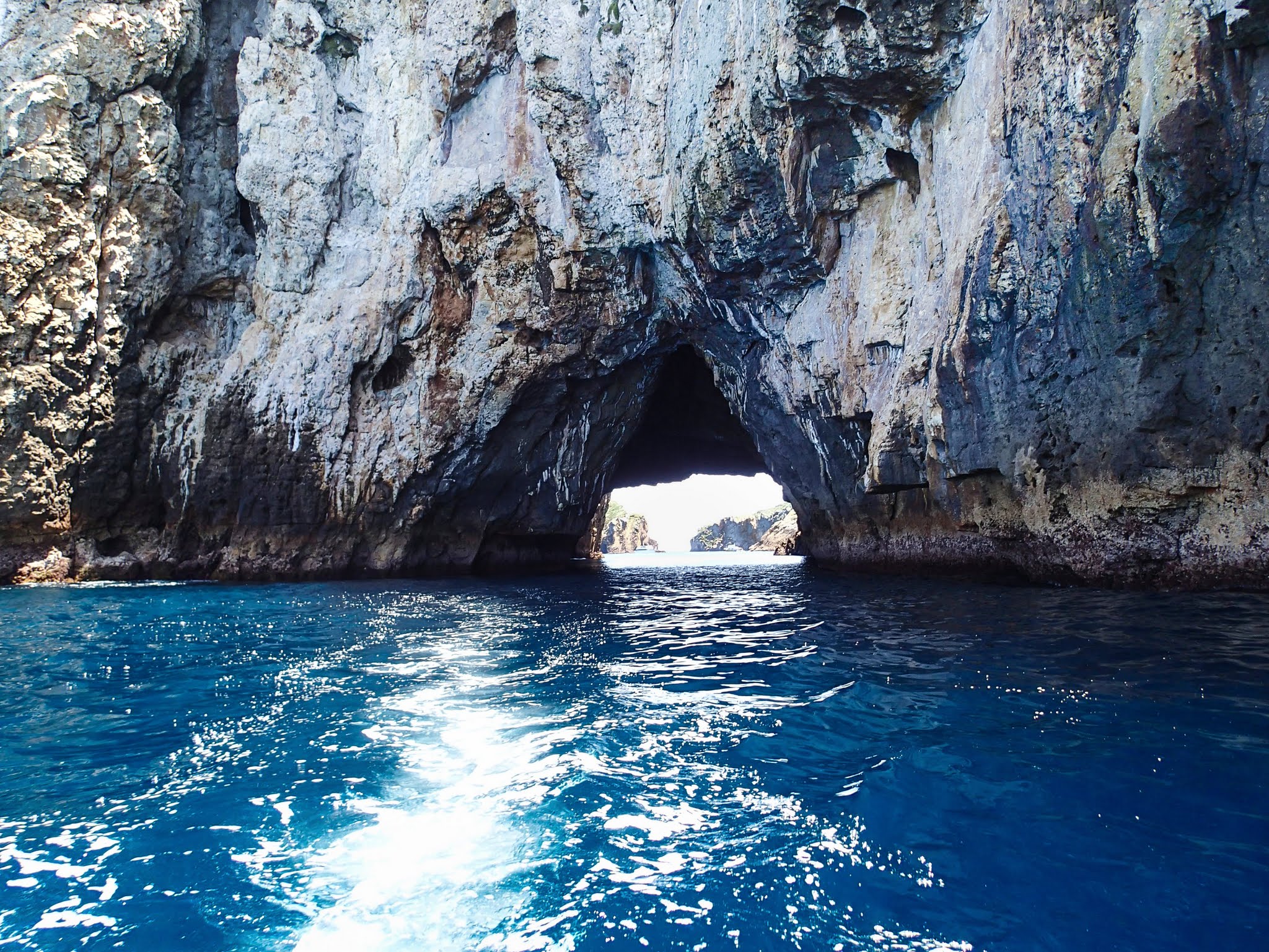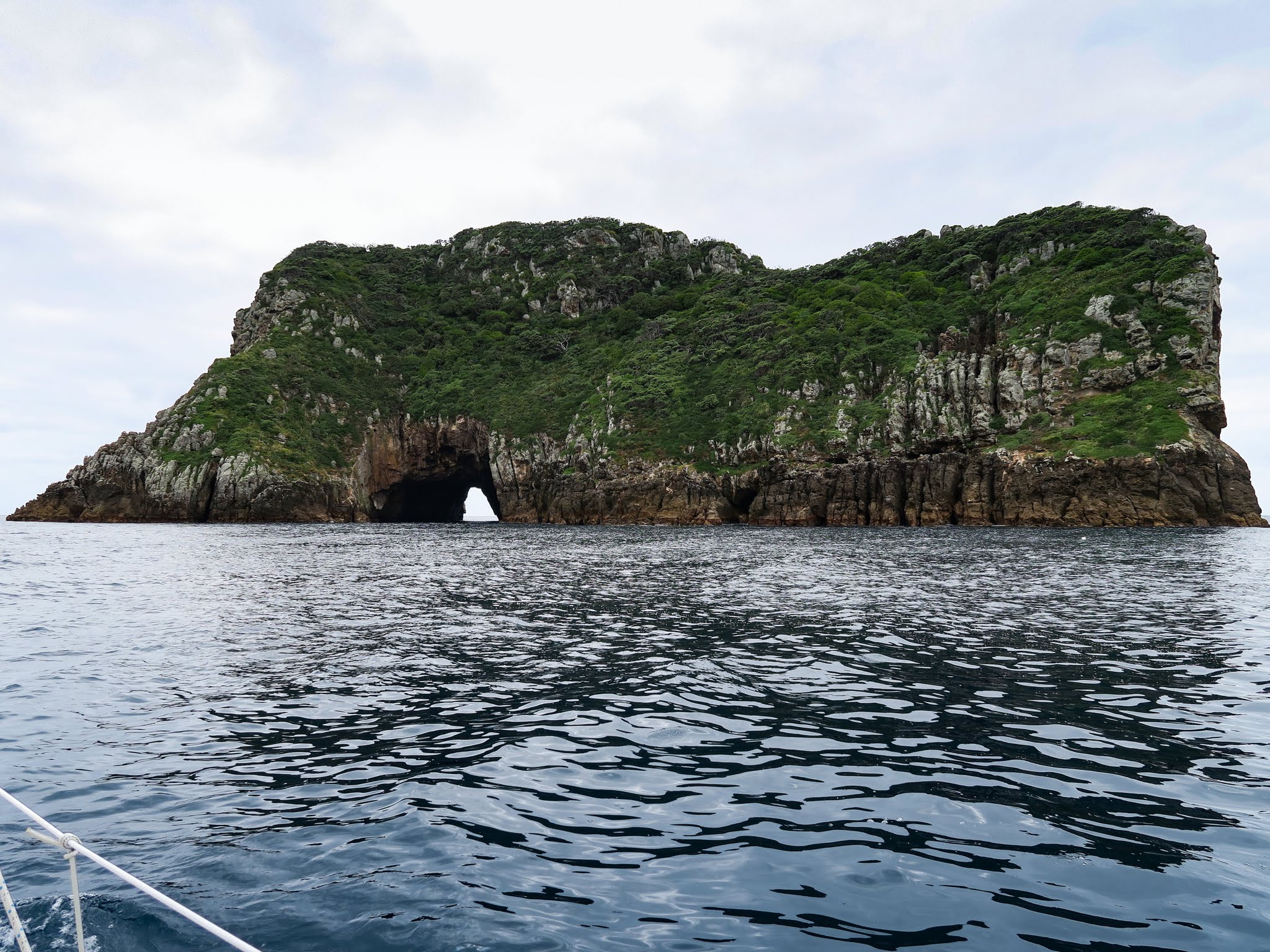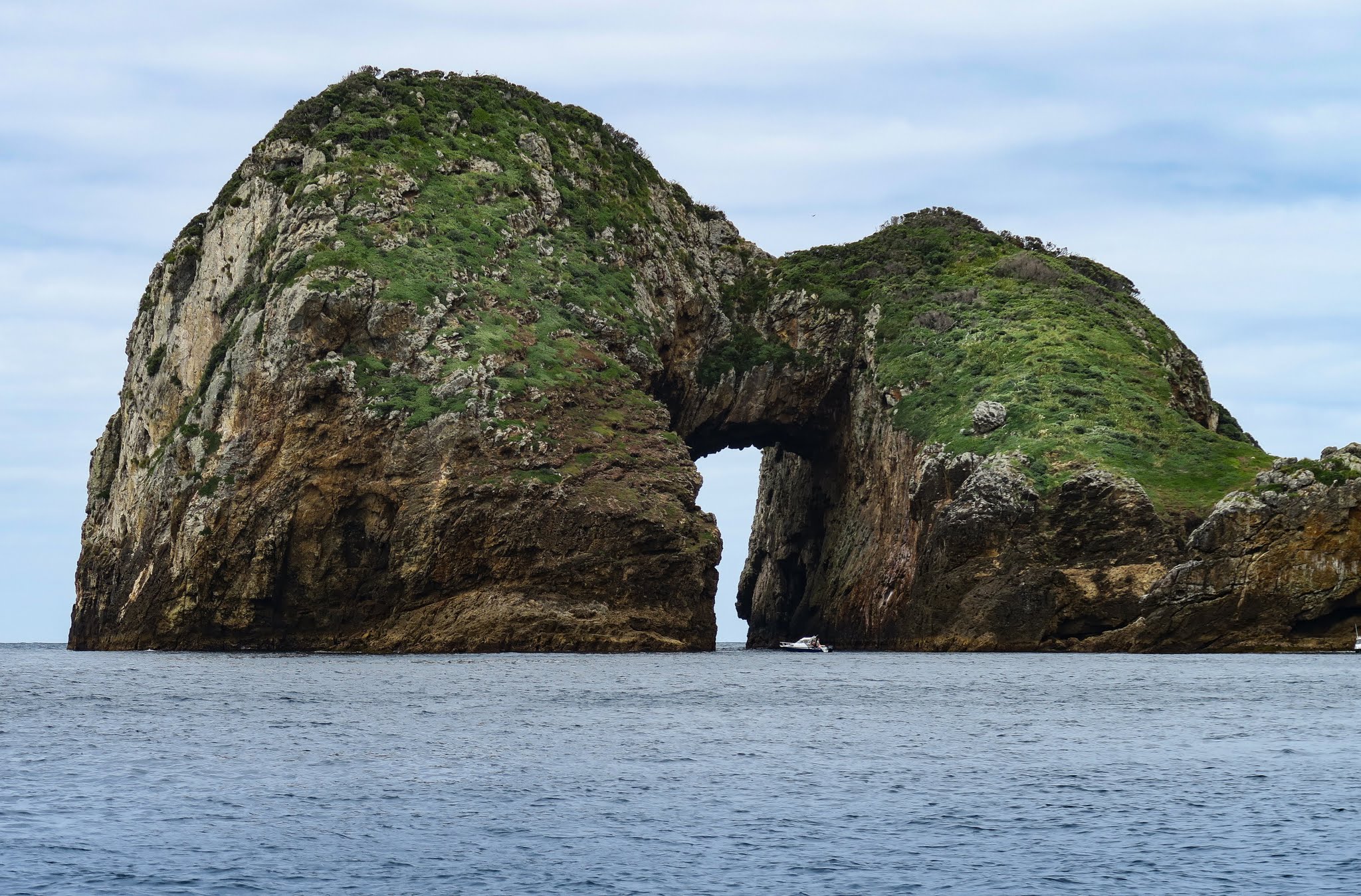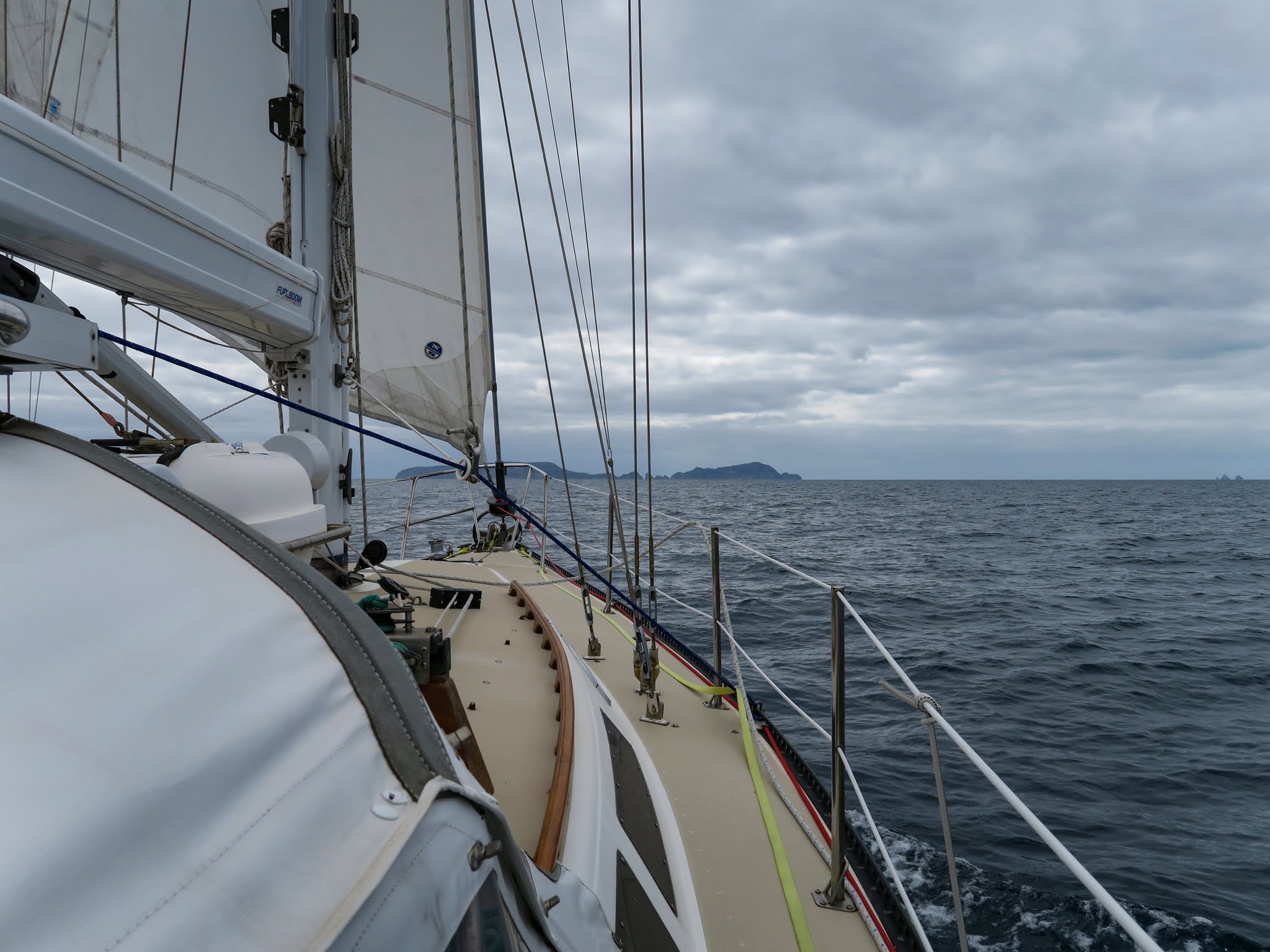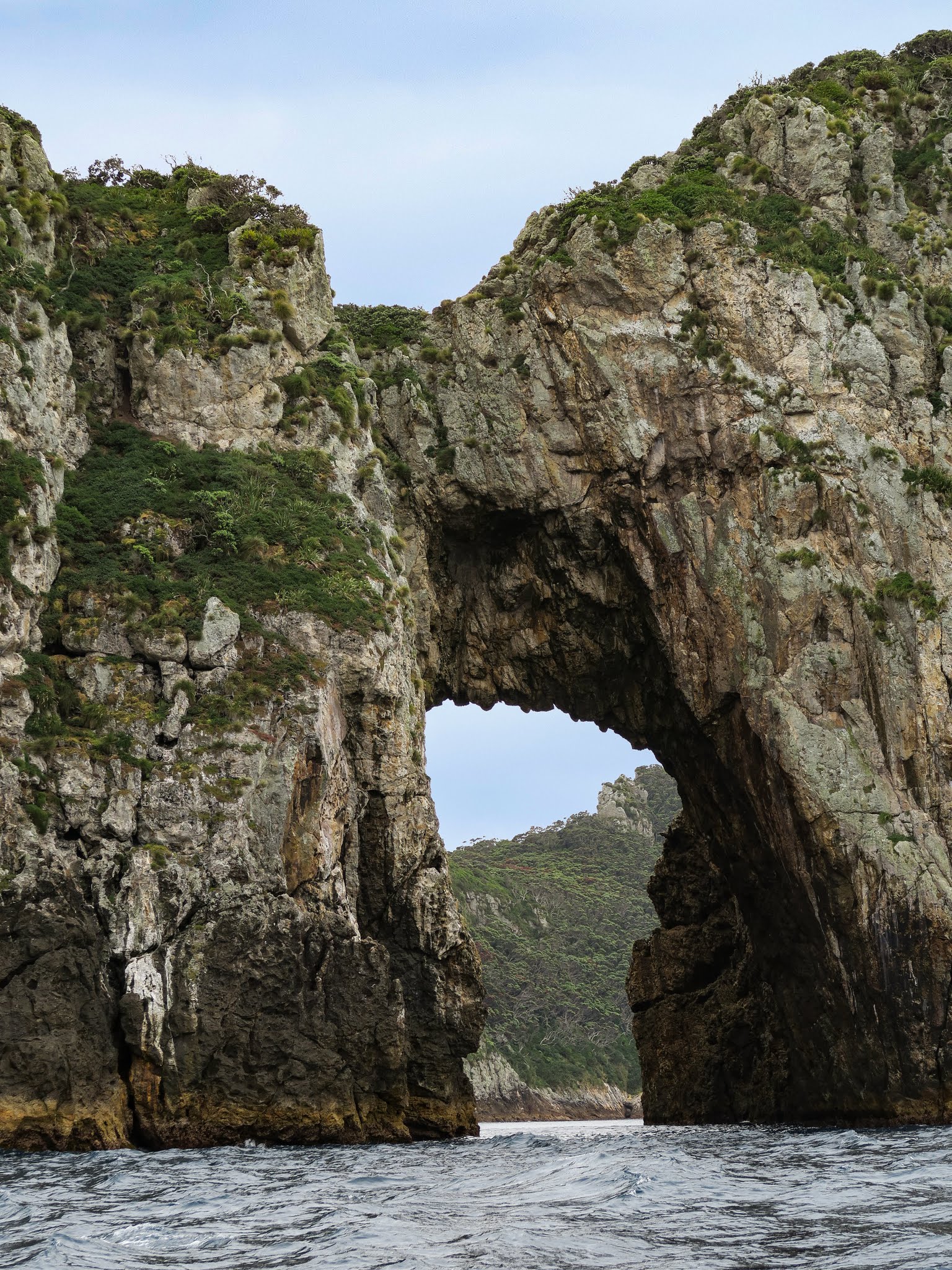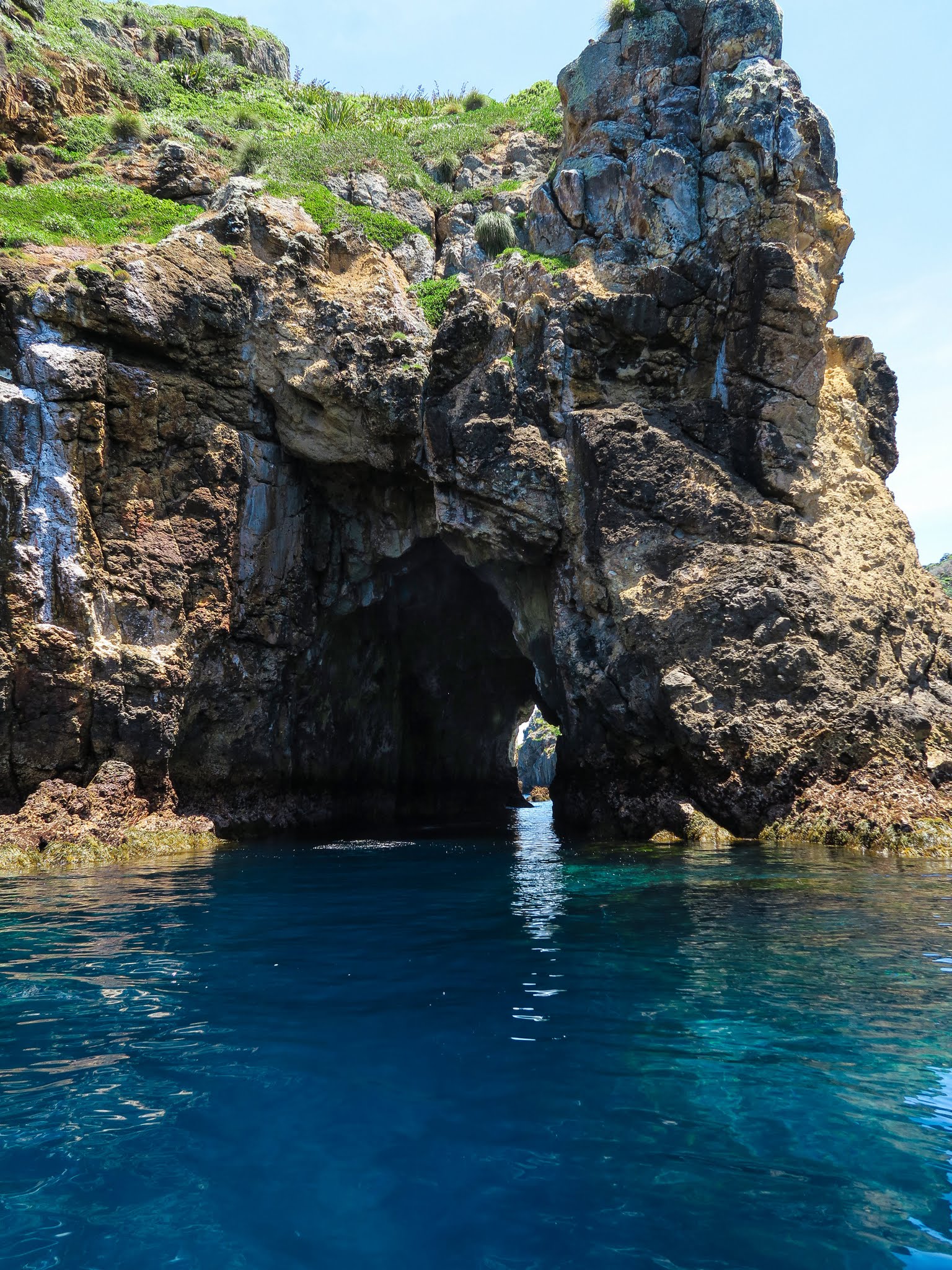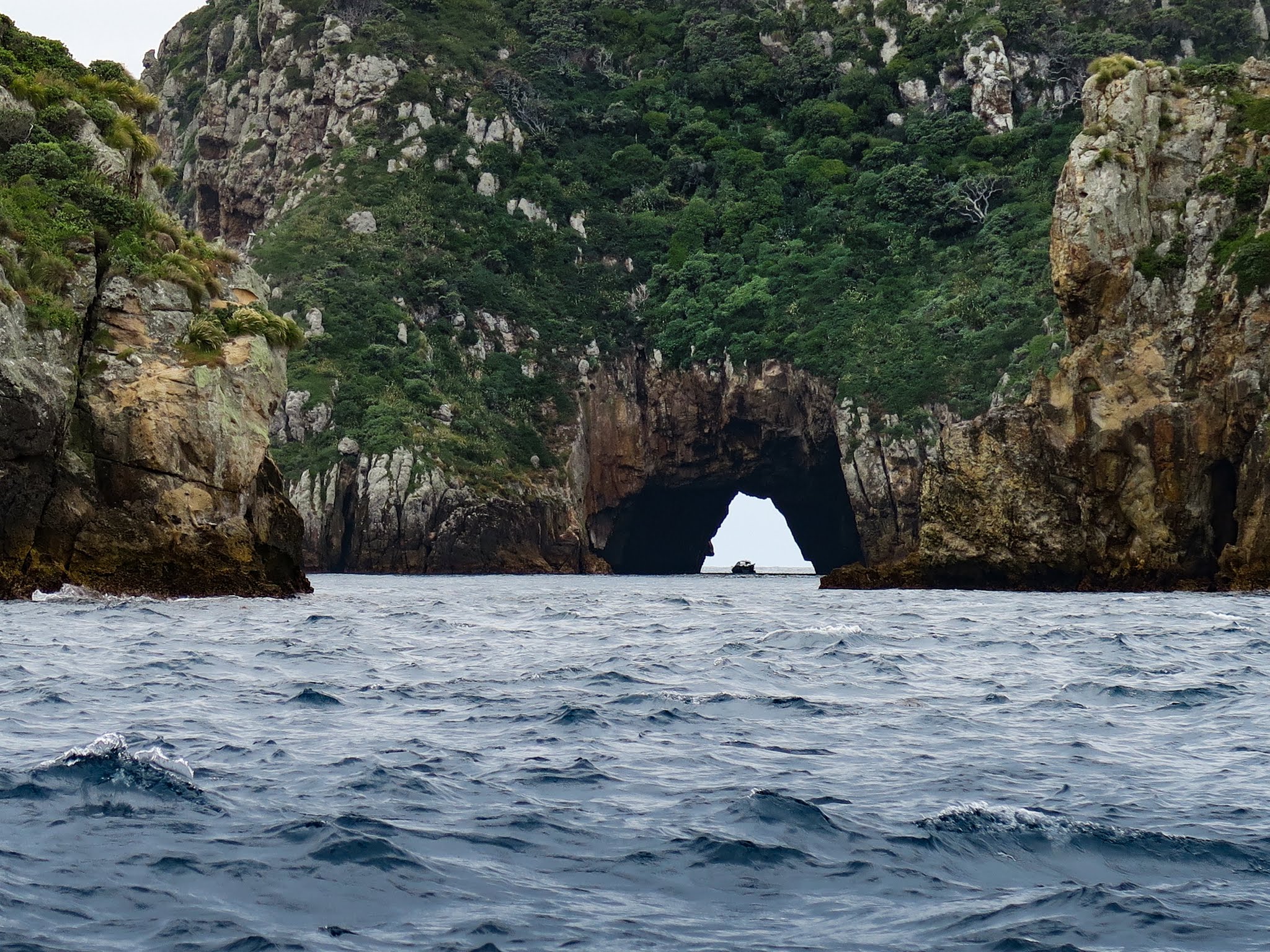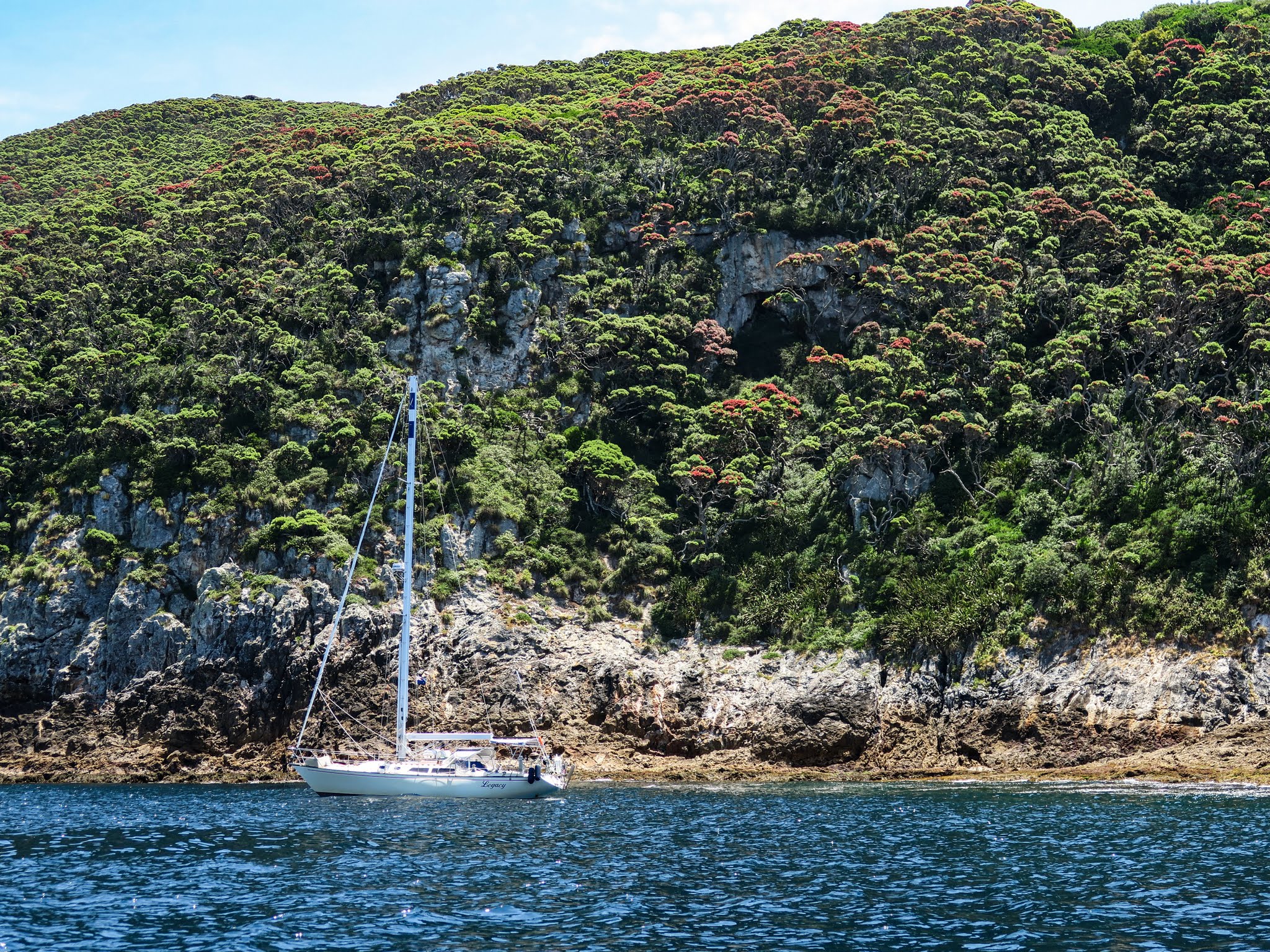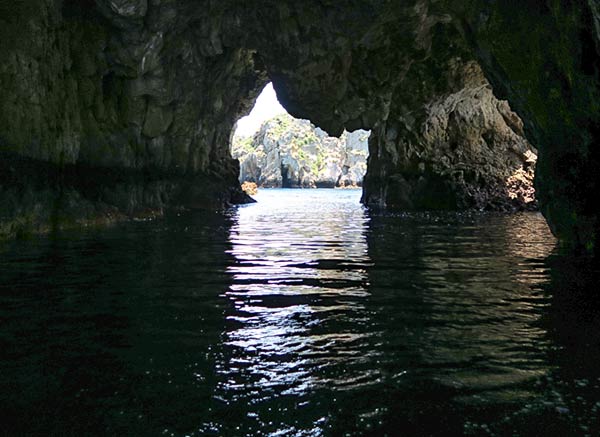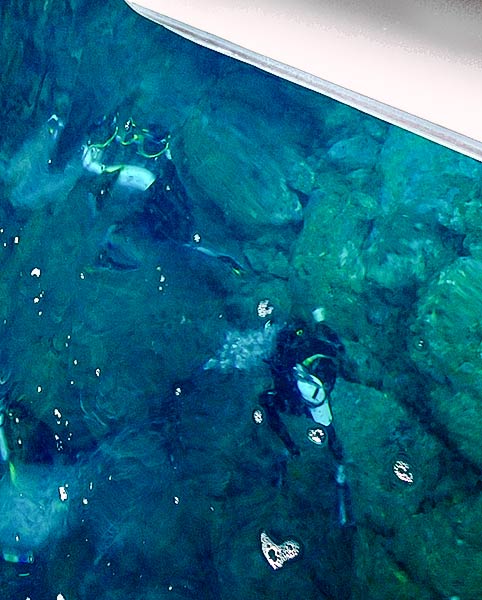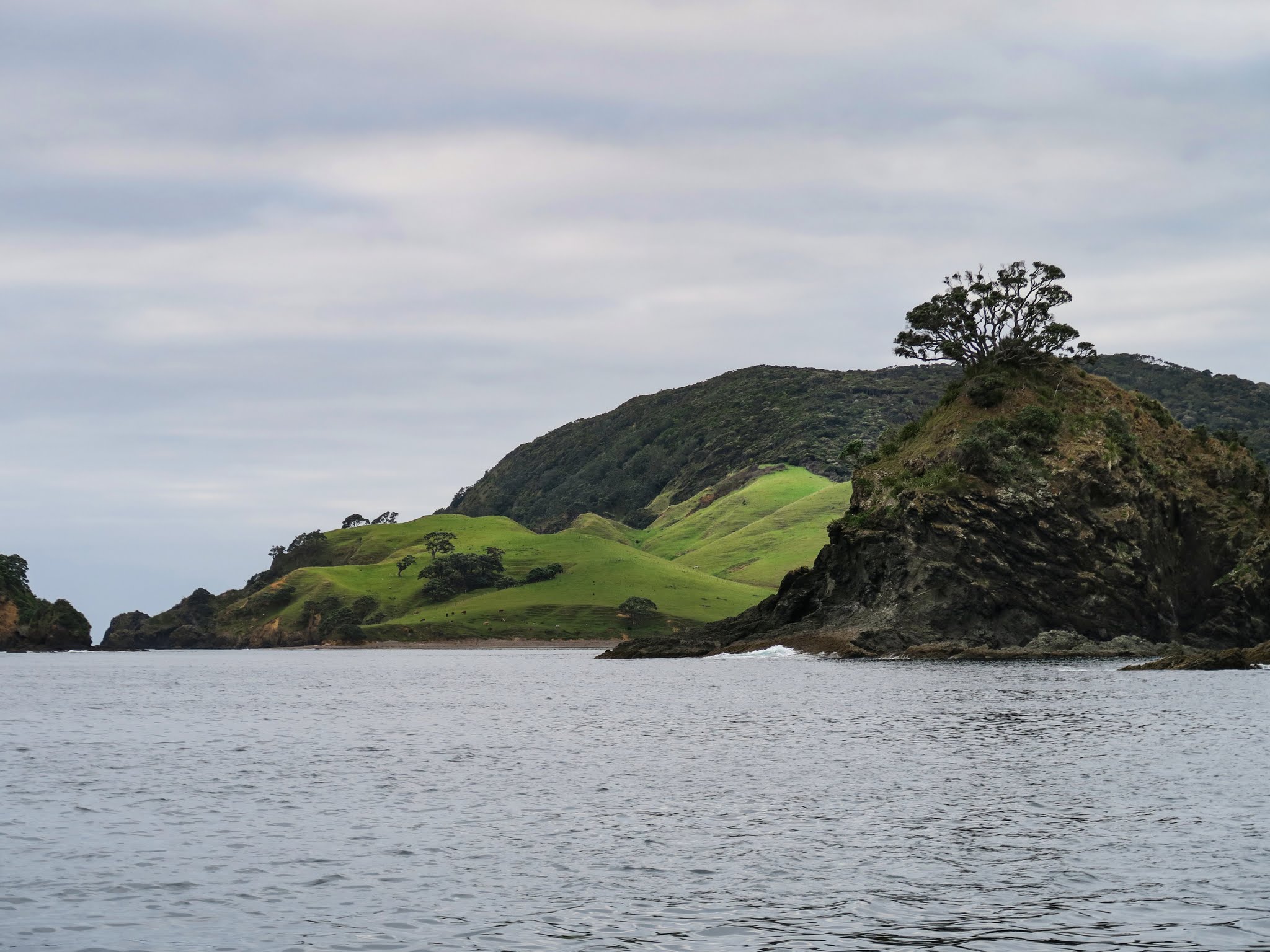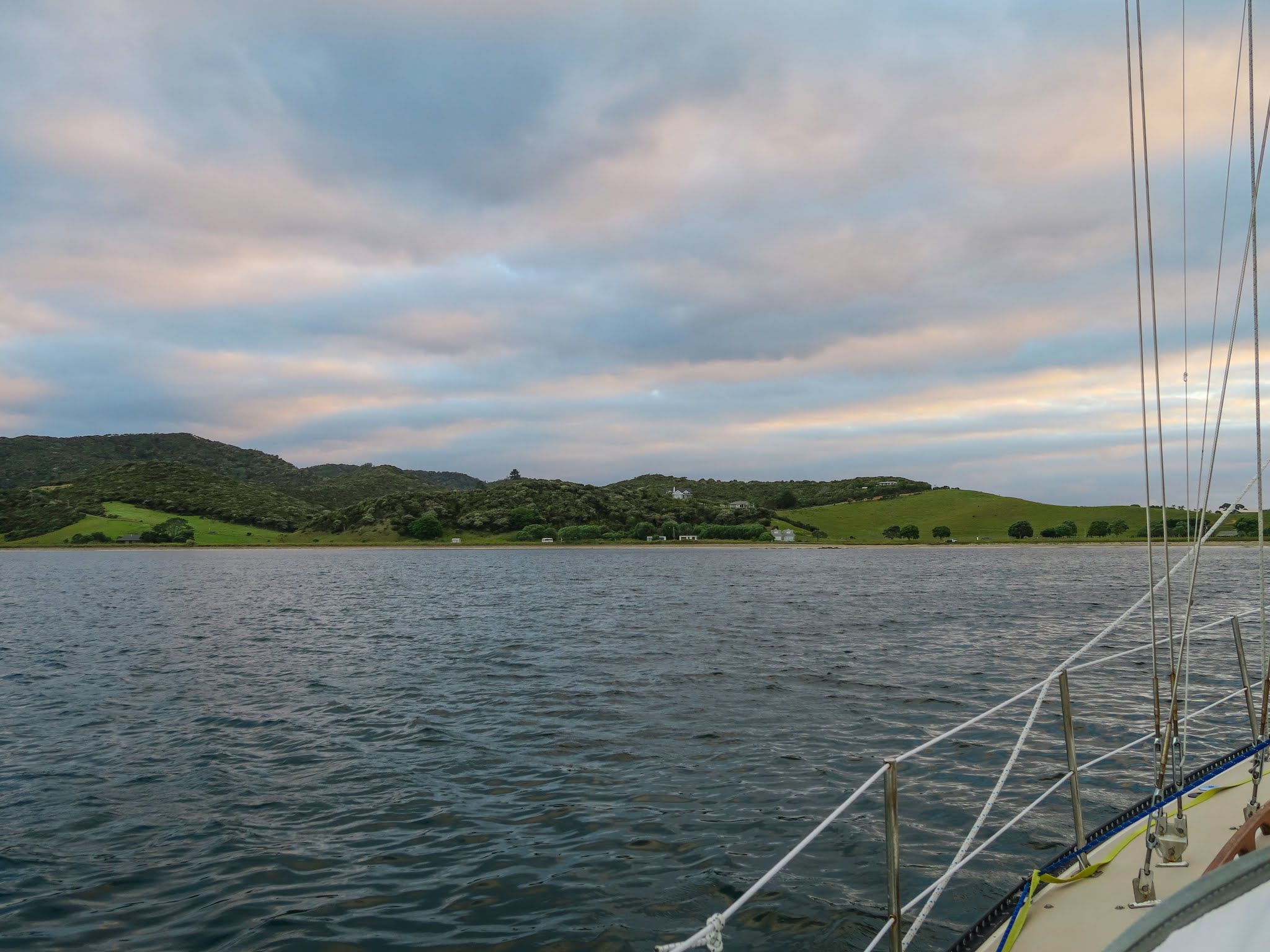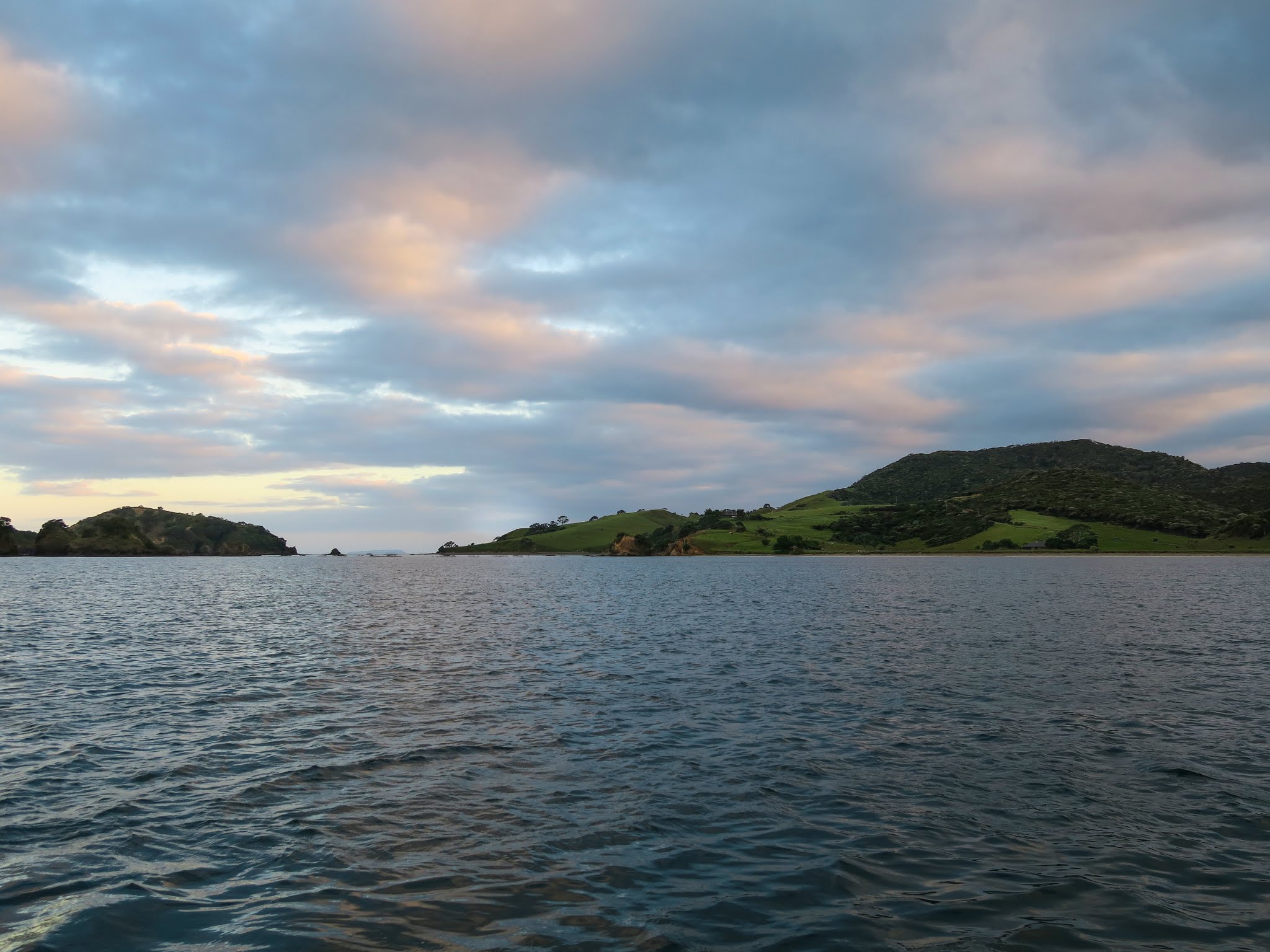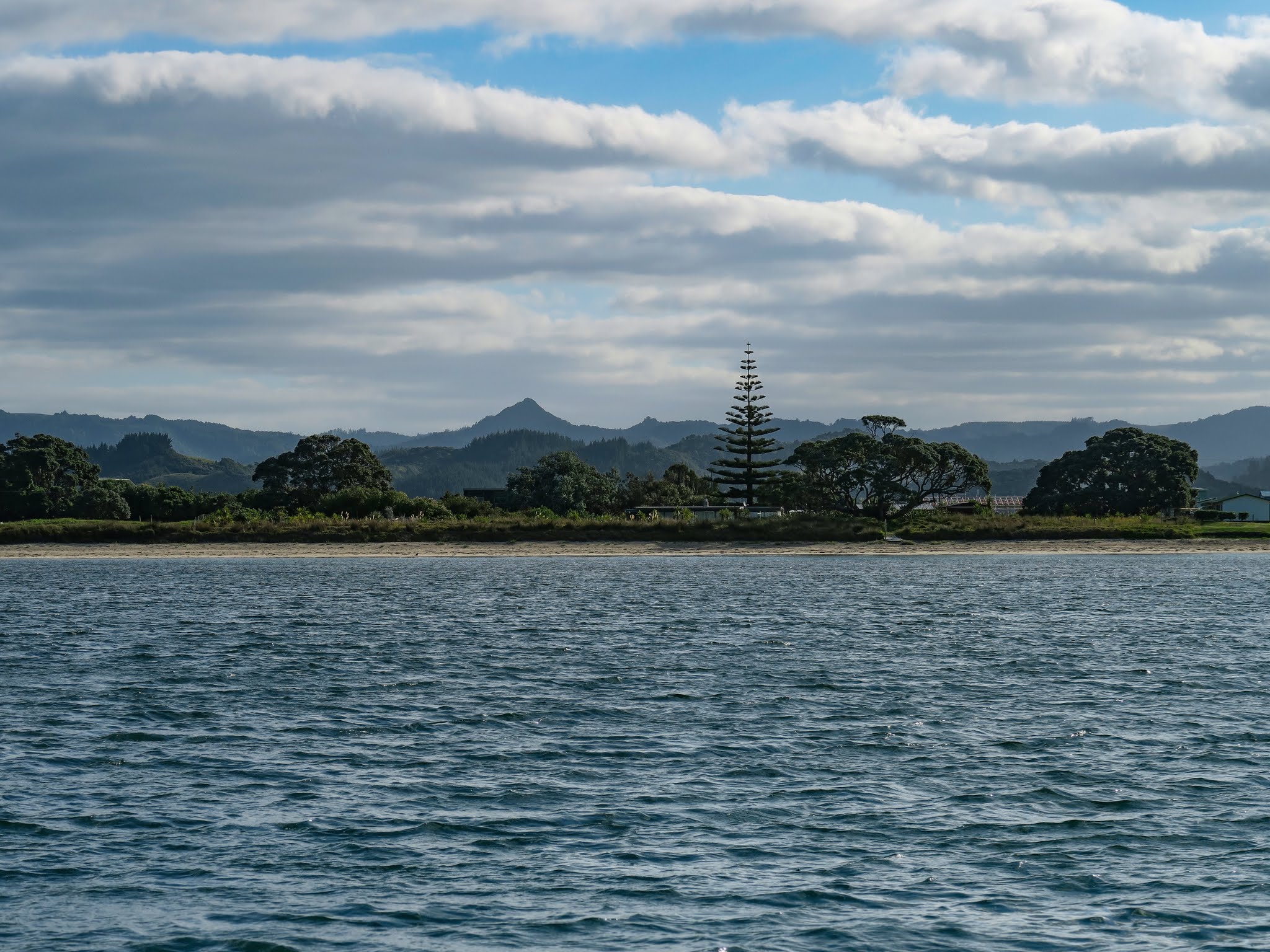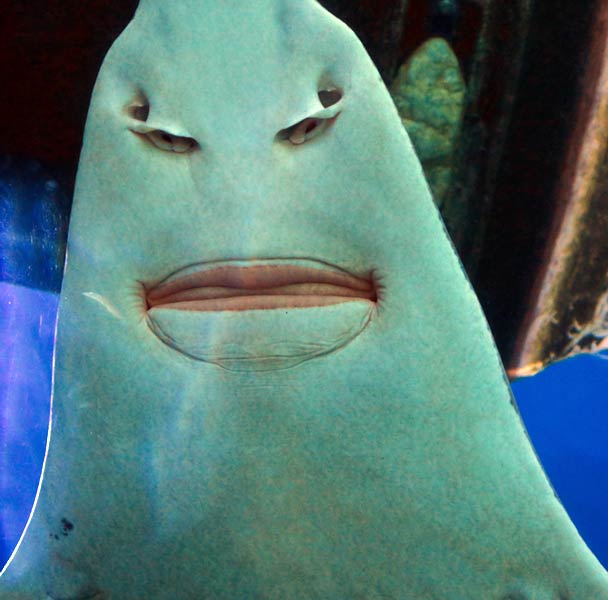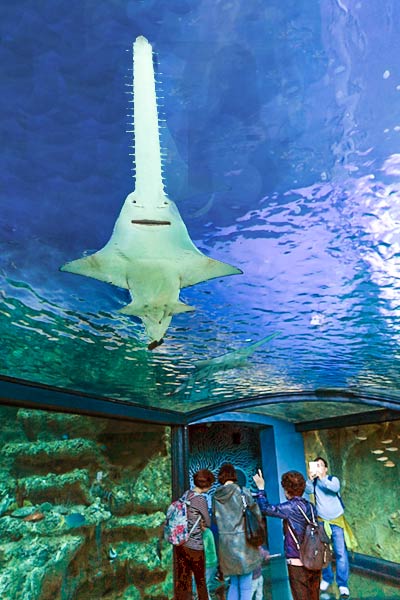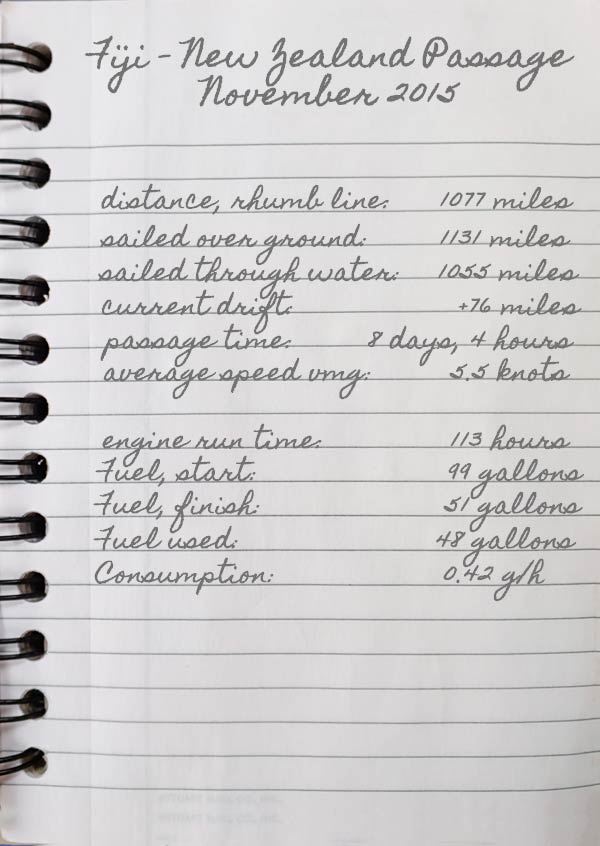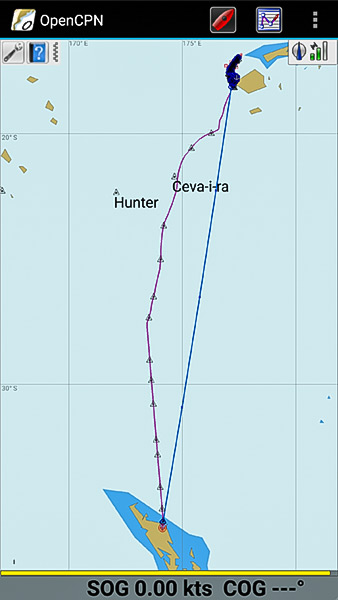December 12, 2015
We always have our radar running. On the trip today, I noticed a radar return on our Simrad 4G radar and I couldn’t find the responsible boat. It turns out it was a kayak.
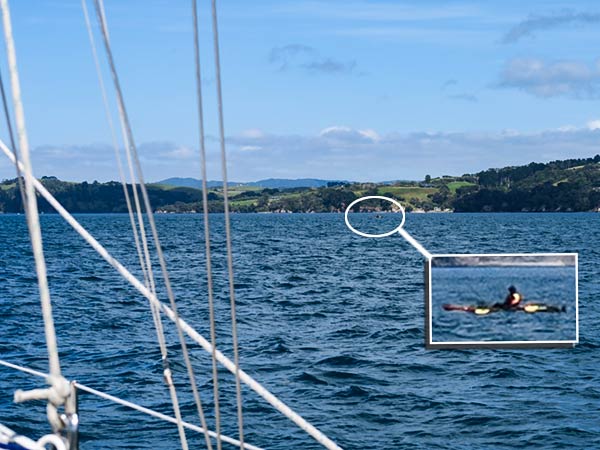
I’ve enlarged the part of the photo with the kayak – see insert. Here’s what his radar return looked like…
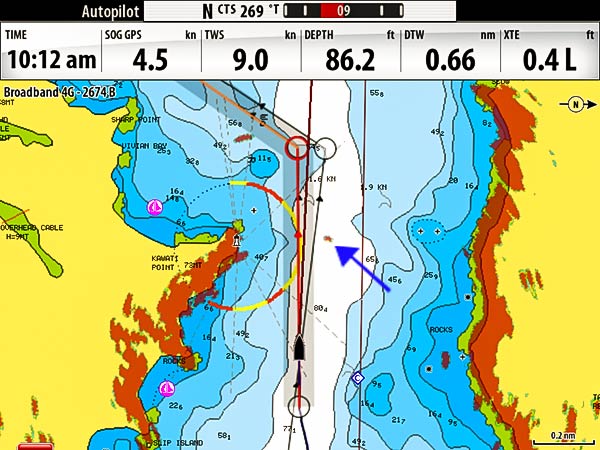
I don’t hesitate to make mention of a product when it doesn’t perform as I expect. I am trying to do the same when it does. This radar sees boats much better than we can, in the distance, up close, small, large, and in calm and rough seas. It also does an excellent job of spotting squalls (and birds, plastic oyster floats, breaching whales, helicopters, and New Zealand’s Orion aircraft, for that matter).
They call this radar “Broadband” but please ignore the marketing terms. Marketers love to use words like “High-Def” or “Digital” or even “Broadband” but it is usually just the same old thing with a new label. For instance, “Digital” simply means that the signal is translated into ones and zeros at some point. Not only is that unimportant, but it’s not always desirable. It really doesn’t make it any better. “High-Def” is totally meaningless. High as compared to what? “It worked for televisions, heck, it ought to work for radar” says the marketing brain trust.
In the case of the 4G radar, “Broadband” might be appropriate in that the radar outputs a wave that sweeps from a lower frequency to a higher frequency, or a broad band of frequencies. By doing this, they are able to get amazing resolution at a fraction of the power used by conventional radar.
Also, most conventional radars have a watch mode or guard zone mode. In this mode, the radar usually comes on every few minutes and does a few sweeps, looking for targets. That was how our old Furuno unit worked. Since the 4G radar uses so little power, it can run continuously, always looking for targets to enter the alarmed area. I like this. Sometimes, especially in big seas, targets only appear every few scans.
I am continually impressed by the Simrad 4G radar. -Rich
(Not paid for by Navico, Simrad, B&G, nor any other affiliate company 😉


